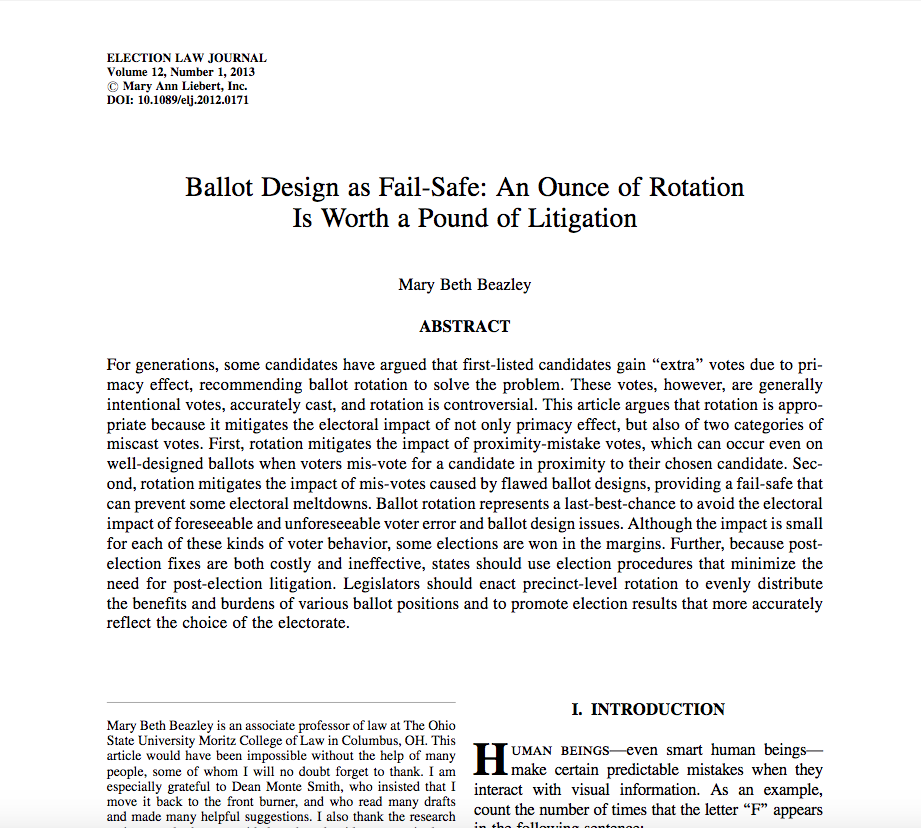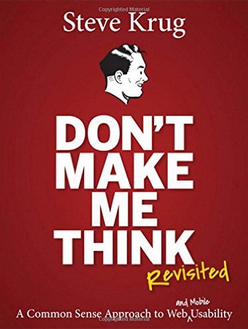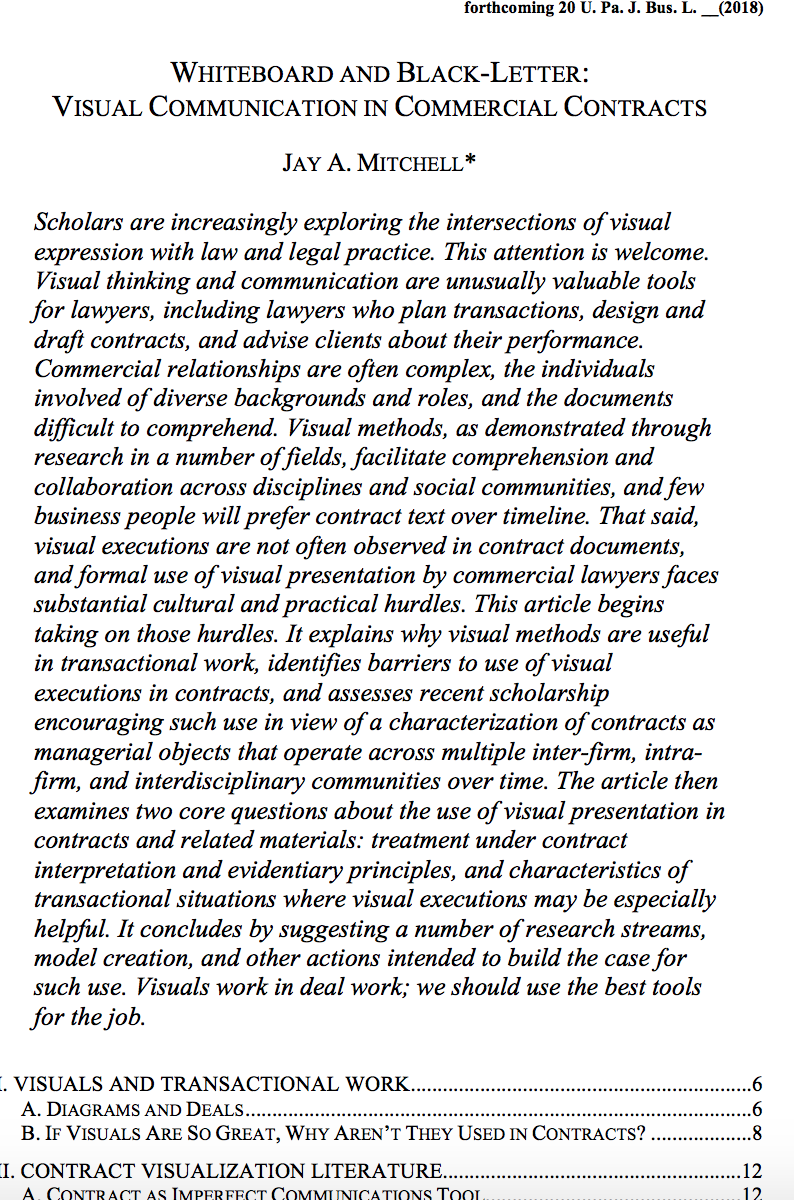Mary Beth Beazley wrote an article in 2013, Ballot Design as Fail-Safe: An Ounce of Rotation Is Worth a Pound of Litigation that examines the importance of visual design to how people make choices on the ballot. She examines typical ballot designs with an eye towards how positioning of information affects how people choose.
Here’s the abstract:
For generations, some candidates have argued that first-listed candidates gain “extra” votes due to primacy effect, recommending ballot rotation to solve the problem. These votes, however, are generally intentional votes, accurately cast, and rotation is controversial. This article argues that rotation is appropriate because it mitigates the electoral impact of not only primacy effect, but also of two categories of miscast votes. First, rotation mitigates the impact of proximity-mistake votes, which can occur even on well-designed ballots when voters mis-vote for a candidate in proximity to their chosen candidate. Second, rotation mitigates the impact of mis-votes caused by flawed ballot designs, providing a fail-safe that can prevent some electoral meltdowns. Ballot rotation represents a last-best-chance to avoid the electoral impact of foreseeable and unforeseeable voter error and ballot design issues. Although the impact is small for each of these kinds of voter behavior, some elections are won in the margins. Further, because post-election fixes are both costly and ineffective, states should use election procedures that minimize the need for post-election litigation. Legislators should enact precinct-level rotation to evenly distribute the benefits and burdens of various ballot positions and to promote election results that more accurately reflect the choice of the electorate.
Her use of visual design and behavioral cues can also be relevant to other legal designs — how we lay out contracts, legal procedures, explanations of a case, and more. How we present information visually will have a large effect on how people engage with it, or use it to make decisions.



